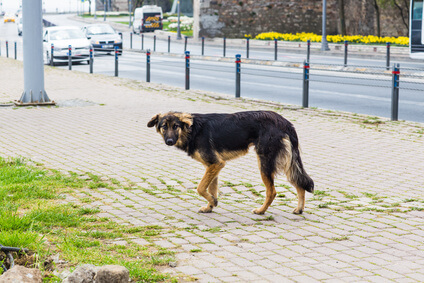Is A Dog Fence For Me? Pet Containment Solutions.
In need of a dog fence for a currently escaping dog?
Are you asking yourself how hard it can be to contain your best friend? Many breeds of large dogs want to get in touch with their wild side and chase the neighbourhood squirrels or bark at cars. If you have a big, strong, energetic dog, you should think carefully about the type of fencing for dogs needed before adding it to your garden.
The trick is to find a fence that satisfies your budget and aesthetic desires while stopping your furry friend from going on the adventure of his doggy dreams.
Here are four factors to keep in mind when choosing the perfect fence:
1. Big dogs need big fences …because they can jump!
A four-foot high fence is unlikely to deter a Husky, Golden Retriever, or Labrador, so you should look for a fence with a height of five or even six feet. For most breeds, six feet should be sufficient. Dog owners start adding extensions to make their fences higher and higher, enables your dog to learn how to jump a little higher each time! Your best bet, in this case, is to tear down your old fence and install a wireless pet fence.
2. Make that fence impossible to climb!
No matter how high your fence is, a clever dog will still try to get over it somehow. Even if he can’t jump it, he may be able to climb it. When choosing a fence, it’s crucial to make sure the design of the fence itself is totally climb-proof. Chain link fences are a bad idea for climbers—they provide your dog with easy footholds! A solid panel fence, on the other hand, has a flat surface without anywhere for your dog to stick his paws, yet your ingenious pooch can leverage items close by to get a foot us such as planters placed alongside a fence. Even better is a wireless dog fence that eliminates any climbing.
3. Give a little privacy!
Okay, your dog may not care about privacy at all, but a wooden privacy fence is a great option for peace of mind. Aside from their climb-proof nature, solid panel privacy fences are great because your dog can’t see what’s on the other side. If he can’t actually see other dogs and people and everything else he loves to bark at, he’ll be a lot calmer. He won’t be visible to other dogs on their walks either, who may get distracted and start barking. Ultimately, choosing the best fence for your dog depends on how your dog behaves and reacts to the outside world. So take some time to consider what will best suit your four-legged companion before making a decision.
4. Make your pet not WANT to escape!
Dogs don’t usually like being restricted, whether it’s a physical or invisible barrier. Boredom is a major factor that tempts dogs to try to escape your garden. If your dog requires a lot of exercise but isn’t being walked regularly, putting up an adequate fence will not be an easy fix to your problem. Maybe you’ll be able to prevent your dog from escaping, but your dog won’t be very happy—and an unhappy dog makes an unhappy owner. Dogs simply don’t thrive when they are cooped up in a little yard. A fence is necessary to keep your dog in, but as a behavioural fix, it’s only a starting point. Creating a dog-friendly garden is one way to keep your dog entertained between the fence walls.
Conclusion
Not everyone has a spacious garden or the ability to provide a dog with ample exercise. That’s exactly why bigger dogs aren’t for everyone, but the right fence does go a long way in terms of keeping your dog safe and secure. Managing massive dogs can be a massive challenge, but for owners that are able to take that challenge, it’s worth the effort so you can keep your dog around for massive cuddles.
Need a wireless fence for your pet? Get in touch & request your quote today!







